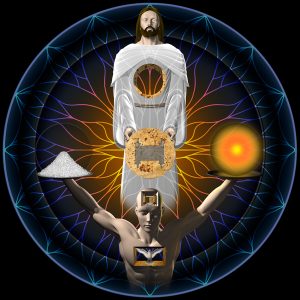 Jesus has just fed 5,000 people with two fish and five loaves of bread. The following day, a crowd remained. They track down Jesus and begin to ask him questions. John 6:31-35 begins with the crowd saying to Jesus: 31 “Our fathers ate the manna in the wilderness; as it is written, ‘He gave them bread from heaven to eat.’” 32 Jesus then said to them, “Truly, truly, I say to you, it was not Moses who gave you the bread from heaven, but my Father gives you the true bread from heaven. 33 For the bread of God is he who comes down from heaven and gives life to the world.” 34 They said to him, “Sir, give us this bread always.” 35 Jesus said to them, “I am the bread of life; whoever comes to me shall not hunger, and whoever believes in me shall never thirst.”
Jesus has just fed 5,000 people with two fish and five loaves of bread. The following day, a crowd remained. They track down Jesus and begin to ask him questions. John 6:31-35 begins with the crowd saying to Jesus: 31 “Our fathers ate the manna in the wilderness; as it is written, ‘He gave them bread from heaven to eat.’” 32 Jesus then said to them, “Truly, truly, I say to you, it was not Moses who gave you the bread from heaven, but my Father gives you the true bread from heaven. 33 For the bread of God is he who comes down from heaven and gives life to the world.” 34 They said to him, “Sir, give us this bread always.” 35 Jesus said to them, “I am the bread of life; whoever comes to me shall not hunger, and whoever believes in me shall never thirst.”
Jesus states, “I am the Bread of Life.”
Check this out. Bethlehem in Hebrew means ‘House of Bread’. Jesus, the ‘Bread of Life’ was then born in the ‘House of Bread’. Interesting, but there is more.
People have been eating bread to nourish their bodies for thousands of years. In the ‘I Am’ statements, Jesus is speaking symbolically. He’s adding a conceptual dimension to bread. Jesus is saying that he is the bread by which our souls must be feed. Must.
Look at the mandala. The bread of heaven is Jesus himself, given to us, by the Father.
I show him pulling a piece of unleavened bread out of his body leaving a hole. You can read this action in a lot of different ways. In this image I am using unleavened bread to suggest the sinless nature of our Lord. He is giving of himself to us. (Often in the Bible, leaven is associated with sin).
The piece of unleavened bread is at the center of the mandala. A scroll, which was embedded in the unleavened bread offered by Jesus, is received by the believer and enters into his mind. This is the place in the image where the concept of bread shifts from a physical sustenance to a spiritual sustenance.
The believer must take the scroll. It is offered to him or her, but it is not forced on them.
The scroll is Jesus, the Word. We come to Jesus. We feast on him. In simple terms, we feed on the Word. I feed on his Word, who he is, what he has done, and what he is doing. My soul is sustained.
The dove in the believer’s chest represents the Holy Spirit.
The Holy Spirit does many things for us. In the context of the image, he is helping the believer digest the scroll. The Holy Spirit enables us to understand the Word. Deeply.
If I could do one thing to grow as a disciple of Christ, I would spend time feasting on Scripture.
I do chew on the word. I digest it, and it becomes part of me. I am spiritually sustained, but I also learn and grow.
Slowly I become salt and light. Ultimately, I am becoming more Christ-like, bit by bit.
As a result, I go on to bear good fruit for the Kingdom of God.
But there is more.
